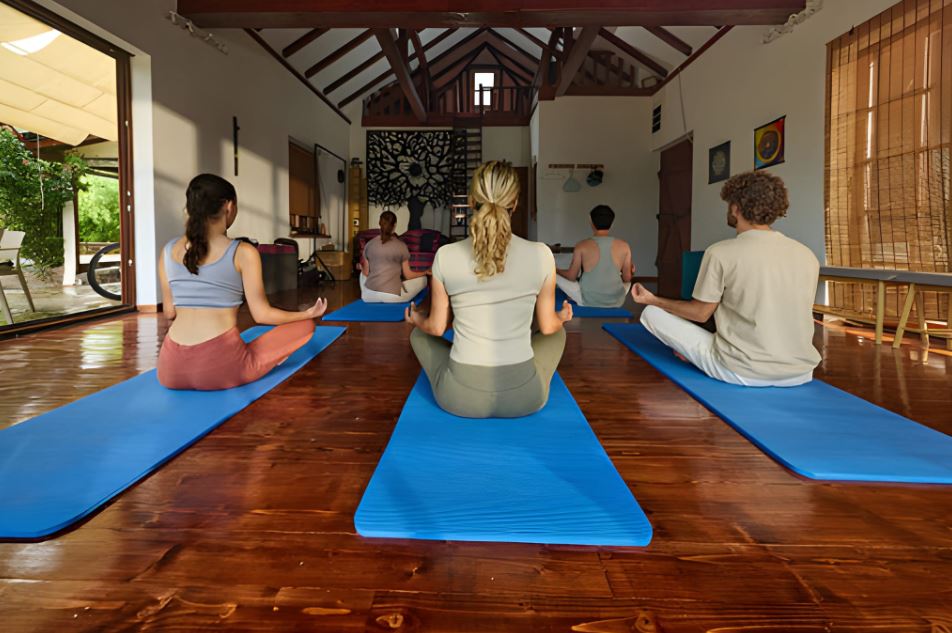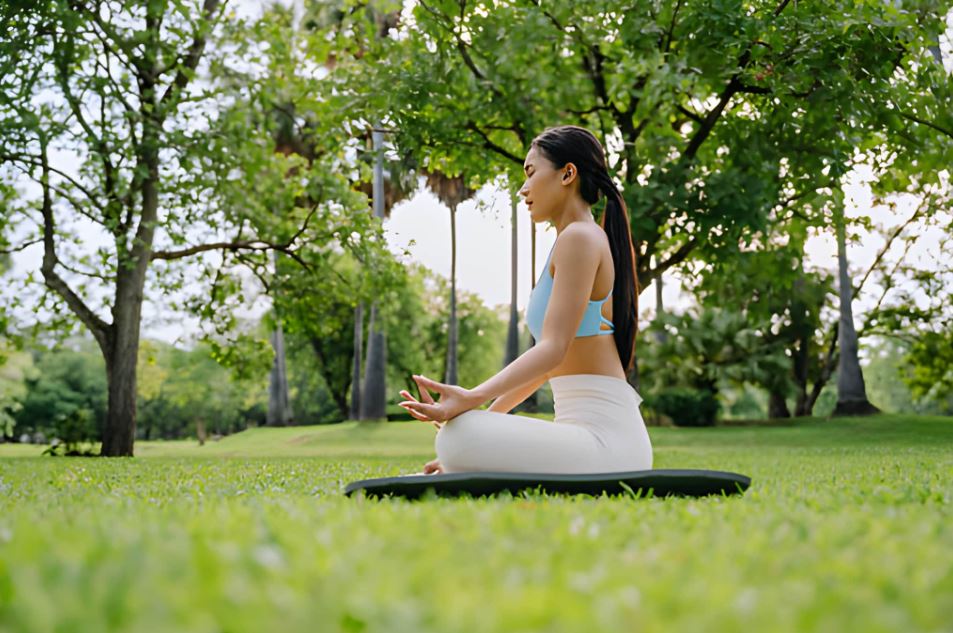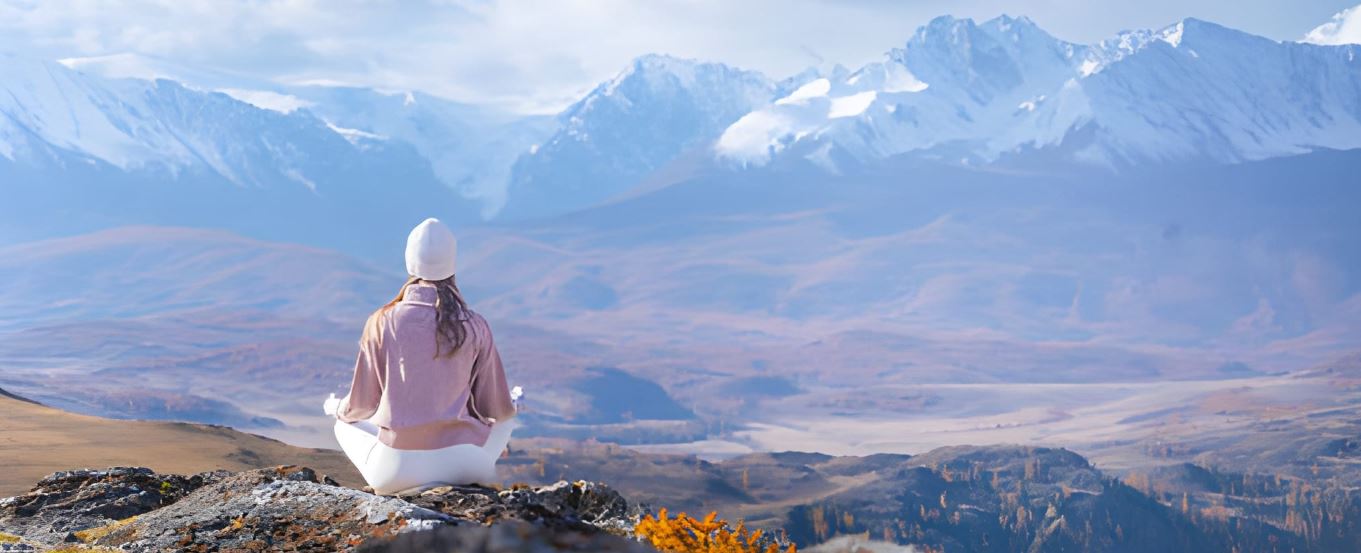Meditation is one of the most powerful practices for calming the mind, developing focus, and connecting with inner peace. However, many people struggle to meditate because of stiffness, restlessness, or discomfort in the body. That’s where yoga comes in. Practicing a few simple yoga poses before meditation helps release physical tension, regulate breathing, and prepare the body to sit comfortably for a longer time.
This article explores yoga poses to practice before meditation, why they are important, and how to perform them mindfully to create the perfect foundation for your meditation session.
Why Yoga Before Meditation?
Before diving into specific postures, it’s essential to understand the connection between yoga and meditation. In yogic philosophy, physical postures (asanas) are designed to prepare the body for stillness. The goal is not only flexibility but also balance—between effort and ease, body and mind.
When you practice yoga before meditation:
- The body releases tension. Gentle stretches open the hips, spine, and shoulders, reducing discomfort when sitting.
- Breathing becomes deeper. Yoga improves oxygen flow, helping calm the nervous system.
- The mind becomes focused. The combination of breath and movement anchors attention in the present moment.
- Energy channels open. According to yogic tradition, asanas balance prana (life energy), which supports deeper meditation.
Even 10–15 minutes of yoga can transform your meditation experience, especially if you choose poses that stabilize and ground your energy.
The Best Yoga Poses Before Meditation
Let’s explore a sequence of yoga poses that gently warm up and align the body for seated meditation. You can perform them in order or choose a few that suit your body and time.
1. Sukhasana (Easy Pose)
Purpose: Opens the hips, lengthens the spine, and promotes stillness.
Sukhasana is the classic meditation pose for beginners. It provides a stable yet relaxed sitting position. To practice, sit cross-legged on the floor or a folded blanket. Keep your spine tall, shoulders relaxed, and chin slightly tucked. Rest your hands on your knees in a mudra or simply palms down.
Take a few slow breaths, feeling the weight of your body grounding into the floor. Sukhasana allows you to settle into the present moment and become aware of your breath.
Tip: If your hips feel tight or knees lift off the ground, sit on a cushion or block to ease pressure.
2. Baddha Konasana (Bound Angle Pose)
Purpose: Opens the inner thighs and hips for a comfortable meditation seat.
This pose is excellent for releasing tension in the groin and hips. Sit on the floor with your legs bent and the soles of your feet together. Hold your feet with both hands, keeping the spine straight. Gently move your knees up and down like butterfly wings to loosen the hips.
Hold the pose for a minute or two while breathing deeply. Baddha Konasana helps reduce discomfort in cross-legged meditation postures and promotes better posture.
Modification: Use cushions under your thighs for support if your knees stay high off the ground.
3. Vajrasana (Thunderbolt Pose)
Purpose: Aligns the spine and improves digestion, ideal for short meditations.
Kneel on the floor with your knees close together and sit back on your heels. Place your hands on your thighs and relax your shoulders. Keep your spine erect and gaze forward or close your eyes.
Vajrasana is often used in traditional meditation practices because it maintains alertness without strain. It’s also great for those who find cross-legged positions uncomfortable.
Tip: Place a folded blanket or cushion between your thighs and calves if your ankles feel sore.
4. Cat-Cow Pose (Marjaryasana–Bitilasana)
Purpose: Warms up the spine and brings awareness to the breath.
Start on your hands and knees with your wrists under shoulders and knees under hips. As you inhale, drop your belly, lift your chest and tailbone for Cow Pose. As you exhale, round your spine, tucking the chin and tailbone for Cat Pose. Continue for 5–10 rounds.
This gentle flow releases tension in the back and neck while improving flexibility in the spine—making it easier to sit upright during meditation.
Focus: Coordinate movement with breath to calm the mind and prepare for stillness.
Read More: 4 Person Yoga Poses Easy and Its Benefits
5. Balasana (Child’s Pose)
Purpose: Calms the nervous system and stretches the spine.
From your hands and knees, bring your big toes together and knees wide. Sit back toward your heels and stretch your arms forward, resting your forehead on the mat. Relax your entire body and breathe deeply.
Balasana is a deeply restorative pose that helps you surrender physically and mentally. It’s a beautiful transition from movement to meditation.
Variation: Place a bolster or cushion under your torso for added comfort.
6. Adho Mukha Svanasana (Downward-Facing Dog)
Purpose: Energizes the body and releases tension from shoulders and legs.
From hands and knees, tuck your toes and lift your hips up and back, forming an inverted “V” shape. Spread your fingers wide and press through your palms while lengthening your spine. Keep your head between your arms and relax your neck.
This pose awakens the whole body, improves blood circulation, and balances energy flow. After holding for 5–8 breaths, slowly lower back to the mat.
Benefit: It prevents sluggishness and helps you feel refreshed before meditation.
7. Paschimottanasana (Seated Forward Bend)
Purpose: Stretches the hamstrings and soothes the mind.
Sit with your legs extended forward. Inhale and lift your arms overhead, lengthening your spine. Exhale as you fold forward from the hips, reaching for your feet or shins. Keep your spine long rather than rounding the back.
This forward bend promotes introspection and quiets mental chatter—ideal before meditation. Stay for several breaths, relaxing deeper with each exhale.
Tip: If you have tight hamstrings, place a folded blanket under your knees.
8. Ardha Matsyendrasana (Half Lord of the Fishes Pose)
Purpose: Detoxifies the body and improves spinal flexibility.
Sit with legs extended, bend your right knee and place your foot outside the left thigh. Keep the left leg straight or bend it under your right hip. Inhale to lengthen your spine and exhale to twist gently toward the right, placing your right hand behind you and left elbow outside the right knee.
Hold for a few breaths, then repeat on the other side. Twisting poses help release tension in the spine and internal organs, creating a light and balanced feeling before sitting for meditation.
9. Padmasana (Lotus Pose)
Purpose: Deepens focus and stability during meditation.
Padmasana is a classical meditation posture symbolizing purity and enlightenment. Sit with both legs extended, then place your right foot on your left thigh and your left foot on your right thigh. Keep the spine tall and hands resting on knees in Gyan Mudra.
While it requires flexibility, Padmasana offers excellent grounding and balance of energy when practiced regularly.
Caution: Attempt this pose only if your hips and knees are open enough. Never force the position.
10. Savasana (Corpse Pose)
Purpose: Integrates body and mind before meditation.
Lie on your back with legs slightly apart and arms relaxed beside you. Close your eyes and take slow, deep breaths. Allow the body to sink into the floor completely.
Although often used at the end of yoga sessions, Savasana is also beneficial before meditation to release any residual tension. It helps you enter a calm, meditative state naturally.
Tip: Focus on relaxing each part of your body consciously before moving into a seated position for meditation.
The Ideal Sequence Before Meditation
If you want a short and effective pre-meditation routine, follow this sequence:
- Cat-Cow Pose – to awaken the spine (1 minute)
- Child’s Pose – to calm the mind (2 minutes)
- Bound Angle Pose – to open the hips (2 minutes)
- Seated Forward Bend – to release the hamstrings (2 minutes)
- Easy Pose or Vajrasana – as your meditation seat
This 10-minute flow loosens the body, aligns posture, and focuses attention. Adjust the duration based on your comfort and schedule.
Read More: Free Yoga Courses
Breathing Awareness: The Bridge to Meditation
Once your body is prepared, the next step is to connect movement with breath. Before transitioning into full meditation, sit comfortably and take a few moments to focus on Pranayama (breath control). Here are two gentle breathing techniques to try:
1. Deep Belly Breathing
Place one hand on your abdomen and inhale slowly through the nose, feeling the belly expand. Exhale gently, letting the belly fall. This activates the parasympathetic nervous system and reduces anxiety.
2. Alternate Nostril Breathing (Nadi Shodhana)
Close your right nostril with your thumb and inhale through the left. Then close the left nostril with your ring finger and exhale through the right. Continue alternating for several rounds. This balances energy channels and clears the mind for meditation.
Tips for Practicing Yoga Before Meditation
- Keep it gentle: The purpose is relaxation, not exertion. Avoid intense or tiring poses.
- Focus on breath: Use slow, mindful breathing throughout your practice.
- Stay consistent: Regular practice will make your meditation posture more natural over time.
- Use props if needed: Cushions, bolsters, or yoga blocks can make poses more comfortable.
- Avoid distractions: Practice in a quiet space to maintain mental focus.
How Yoga Enhances Meditation
The combination of yoga and meditation brings a profound transformation. Here’s how:
- Improved posture: Strengthens the back and opens the hips, allowing longer, pain-free sitting.
- Calmer mind: The focus required in yoga transitions smoothly into meditative concentration.
- Better energy flow: Balances prana, creating harmony between body and mind.
- Greater awareness: Movement and stillness together deepen mindfulness.
As the body relaxes and the mind clears, meditation becomes less about effort and more about effortless being.
Conclusion
Yoga and meditation are two sides of the same coin—one prepares the body, the other refines the mind. By practicing simple yoga poses before meditation, you create a bridge between physical activity and inner stillness. Whether it’s a few gentle stretches or a complete sequence, the goal is the same: to enter meditation with ease, comfort, and clarity.
Take time each day to connect with your body before turning inward. With regular practice, you’ll find your meditation deeper, your body lighter, and your mind more peaceful. The union of yoga and meditation is where true stillness begins.



